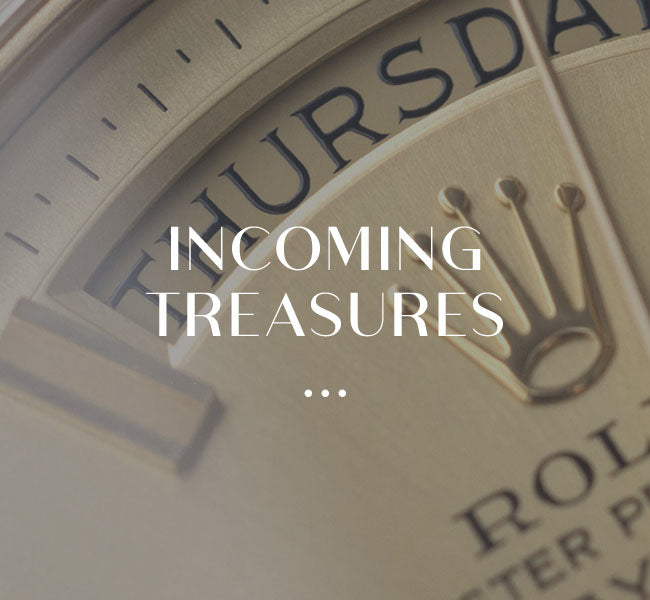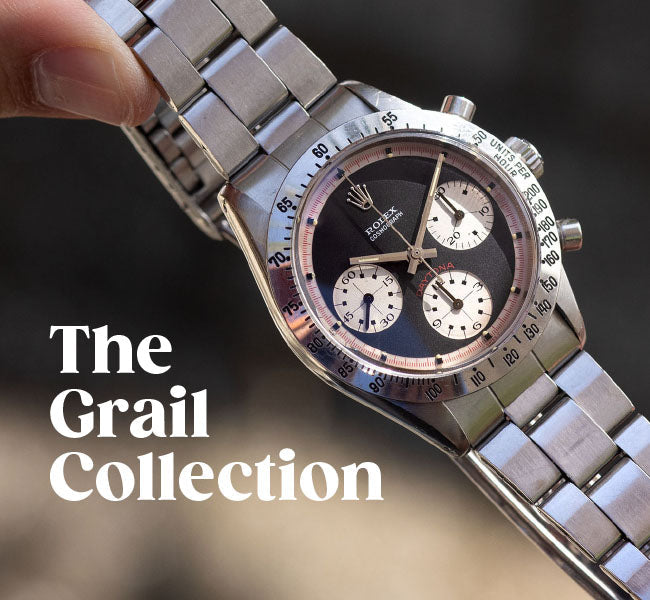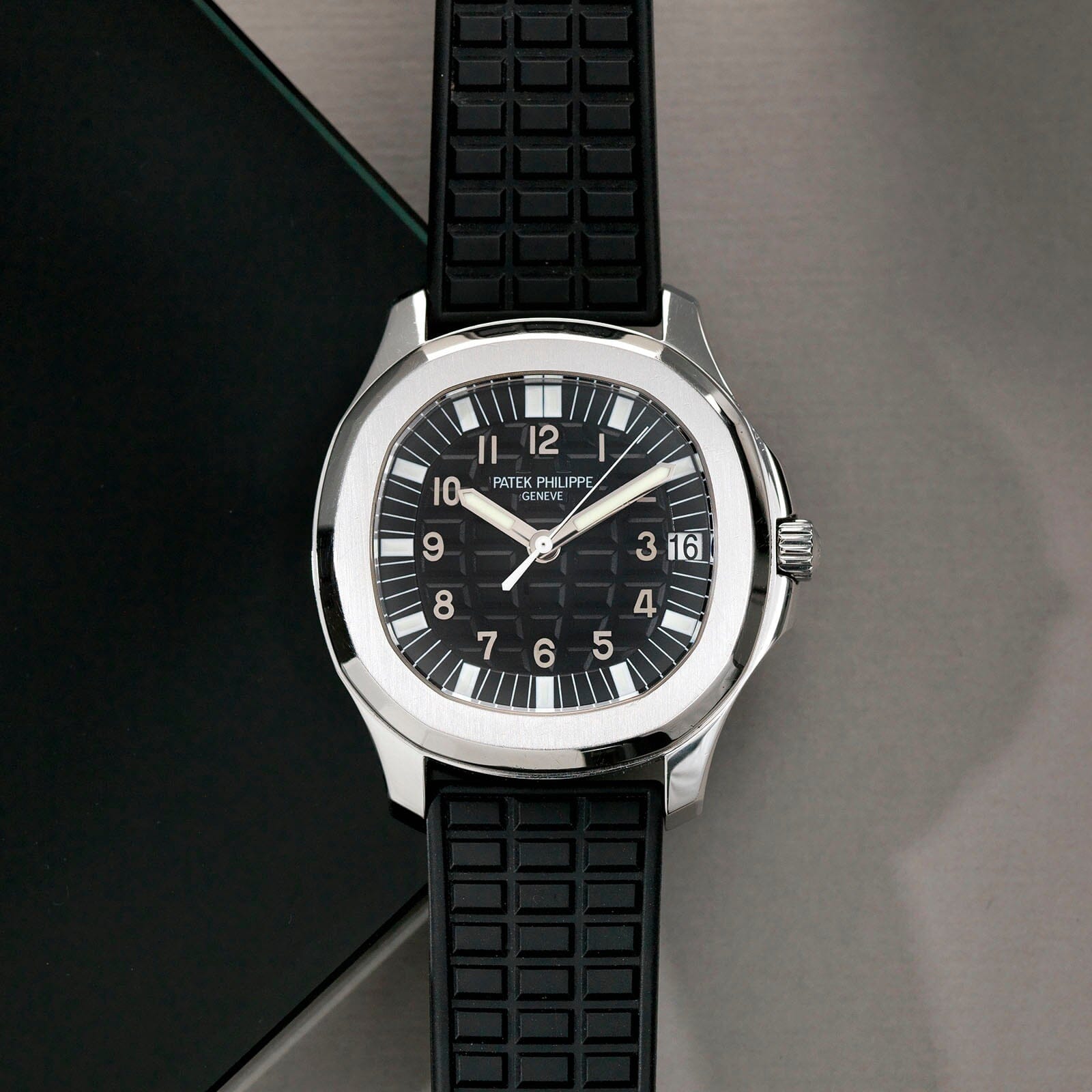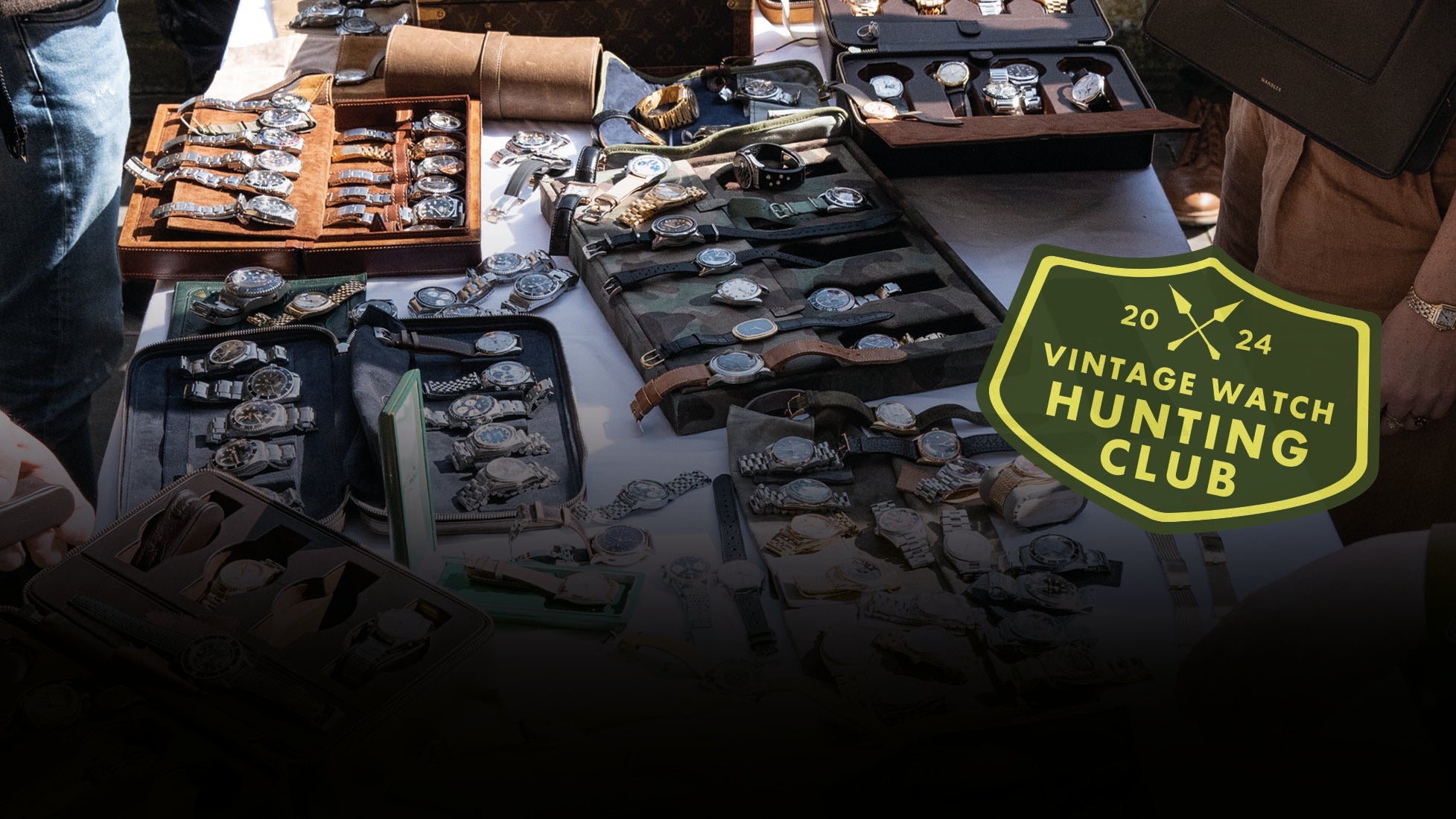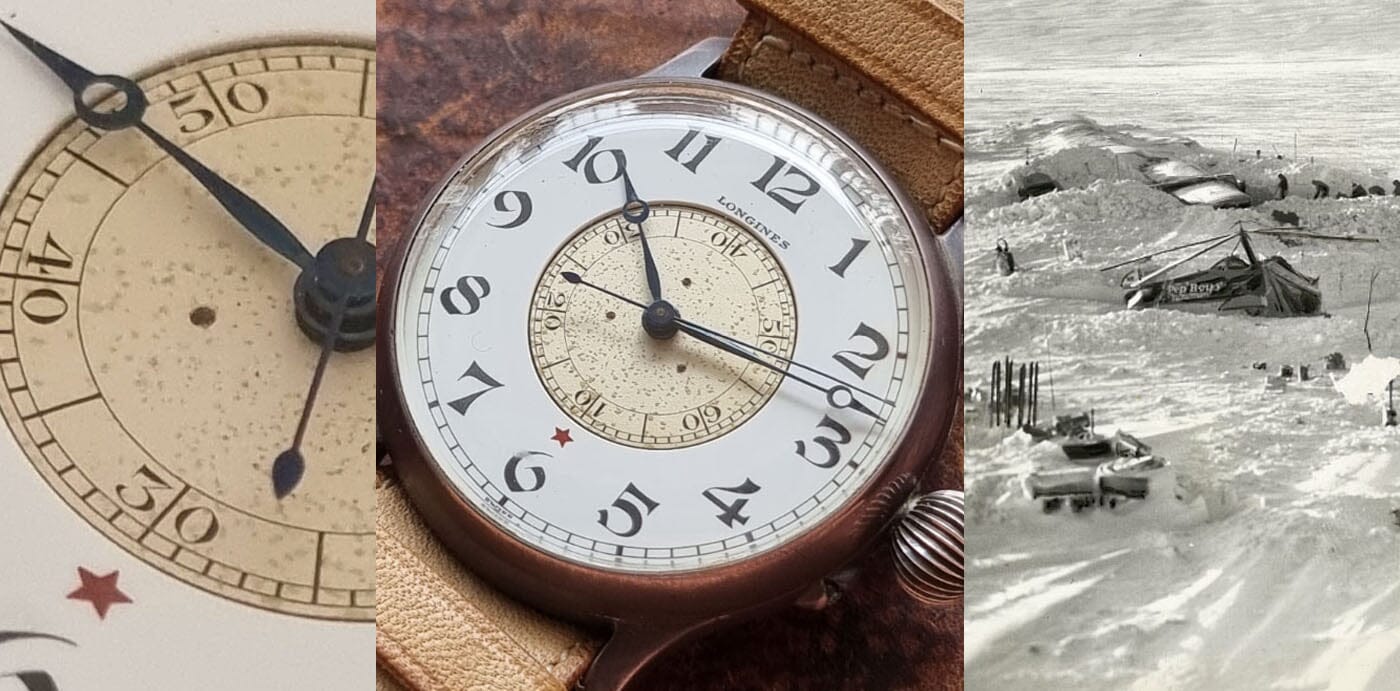
Admiral Byrd’s special Longines Weems sidereal timepiece…
While achieving numerous milestones in his career, Admiral Byrd is best known for his exceptional Antarctic expeditions that led to nearly complete and accurate mapping of the continent. During these remarkable journeys, he relied on a remarkable Longines timepiece, making it one of history's most significant pilot watches.
Admiral Byrd also remains one of the most highly decorated officers in the annals of the United States Navy.
Longines enjoyed a multi decade zenith during the first part of the C20th. They won more precision timing and accuracy awards than any other maker from the four great observatories of the world - London’s Kew-Teddington, the US Naval in Washington, and those in Neuchatel and Geneva.

Absent radio beacons, satellites and radar - an accurate, reliable timekeeper was relied upon for making navigational calculations, making the difference between life and death. Lindbergh stressed, “Accuracy means something to me. It’s vital to my sense of values. I’ve learned not to trust people who are inaccurate. Every aviator knows that if mechanics are inaccurate, aircraft crash. If pilots are inaccurate, they get lost-sometimes killed. In my profession, life itself, depends on accuracy”.
Longines made unique, reliable, robust and precise instruments for explorers and aviators.
The extreme temperatures of the polar regions were brutal on both man and equipment. The intrepid explorer and adventurer, Prince Luigi Amedeo, the Duke of Abruzzi, used five Longines Chronometers aboard his ship Stella Polare, for his 1899 Arctic expedition that reached 86º 33’N, the most northern latitude ever reached at that time. He noted their incredible reliability when he said, “they kept good time in spite of the sudden changes to temperature to which they were subjected”.
Canada’s most famous arctic explorer, Captain Joseph-Elzear Bernier, who was the youngest captain in Canada’s history, at just 17, also relied upon Longines chronometers for the extremes of polar timekeeping. In 1909, he stated, “During 429 days in Arctic waters, our Longines watches performed perfectly. When a watch is taken from the pocket, it faces as much as 90 degrees change in temperature. This alone is sufficient to cause the average watch to go out of order. I cannot be too laudatory in my appreciation of the exceptional running qualities of your watches”. Over a one plus year duration, “one varied 13 seconds and the other only 4.

Longines chronometers timed the North west passage exploits of Roald Amundsen, along with almost all of aviation’s greatest feats and records. Longines had a formidable team - the technical prowess of Alfred Pfister, along with one of aviation’s greatest gatekeepers, and visionaries, John P.V Heinmuller. Acquiring the nickname, ‘Aero One’, Heinmuller departed St Imier in 1912, as a twenty-year-old, to join the American Longines agent and entrepreneur Albert Wittnauer.
With the Great war on the horizon, the latter two were the key driving force behind the supply of cockpit instruments and plane calottes to the burgeoning U.S. Army Air Corps and other military forces. The French air force took delivery of calottes as early as 1915, with advertisements appearing in the French title L’Illustration by 1916. Heinmuller served as Vice President of Wittnauer from 1921, and later the President in 1936 of the Longines-Wittnauer Company. He also served as the chief official timer for the National Aeronautic Association, the Fédération Aéronautique Internationale and presided over the World Air Sport Federation. Heinmuller was a personal friend to many of aviation’s greatest names, recording and bringing recognition to many of these early aviation exploits and endeavours in his book, Man’s Fight to Fly.
The interwar years saw almost daily challenges to speed, altitude, distance and duration records. As a consequence, just like the Harrison’s challenges 200 years prior, air navigation provided its own set of complexities. The speed of the plane, night flights, flights over unchartered water and land in difficult weather conditions would cost many a pilot their life. Initially, two types of navigation were used. The first, pilotage, involved looking out the window to determine one’s position from known landmarks. The other, dead reckoning, involved setting a compass course based on one’s last known position and allowing for drift and one’s known speed. The famous BBC pips were introduced in 1924 by Sir Frank Dyson, bringing with it the age of radio navigation that relied upon radio beacons.
The who’s who of early aviation and exploration history, including Admiral Byrd, Wiley Post, Howard Hughes, Amelia Earhart, Kingsford Smith, Harold Gatty, Sir Hubert Wilkins et al, all relied upon Longines timepieces aboard planes, ships, and bathyscapes for record setting and exploration. This can be clearly seen on a Longines-Wittnauer display board that captures this remarkable time.

Credit: Flight Birds
Post his 1927 New York to Paris 3620 mile crossing, Lindbergh became the most famous man in the world. Europe was a large target and a post mortem analysis by Heinmuller, noted that for the first time in recorded history, there was a net wind drift of zero enroute – Lucky Lindy indeed.
There was no Longines aboard his famous trans-Atlantic crossing, however, the creative genius and master navigator P.V.H Weems would soon work with the St Imier maker, Lindbergh and Heinmuller to create the two most important pilot watches in history. The first of these, the Longines Weems second setting watch which improved upon Weems modified Waltham Vanguard pocket watches.
The Weems Second setting watch enabled greater time synchronization by allowing the inner chapter of the watch dial to rotate and provide a plus or minus adjustment of up to 30 seconds. This was done by setting the second hand relative to the hour and minute hand with a known accurate source. The second model was Lindbergh’s improved hour angle watch. Essentially a modified and improved Weems watch with the addition of a calibrated turning bezel featuring the unit of arc calibrations. The Hour angle watch developed by Lindbergh enabled and expedited the calculation of longitude.
The very first prototype Longines Weems, and the watch of the creator with serial 3585867 was delivered on the 30th of November, 1928. It used a repurposed calibre originally destined for the Touran, a Turkish pocketwatch model from 1918.
Having been pipped to the post by Lindbergh on the Trans-Atlantic crossing. It is likely Byrd used one of Weems hand modified Waltham Second-setting pocket watches for his first Antarctic expedition in 1928. Byrd famously stated that “A static hero is a public liability. Progress grows out of motion”. Drawn by the possibility of geological discovery, untapped natural resources and the development of new technology he assembled two ships, three airplanes and a large team. With the City of New York, a large Norwegian ship leading the way, there followed a Ford Trimotor named the Floyd Bennett, a Fairchild FC-2W2, NX8006 named Stars And Stripes and a Fokker Universal monoplane called the Virginia. The team set up base camp on the Ross Ice Shelf; affectionately naming their temporary home Little America.

Numerous geological investigations and photographic expeditions were carried out from Little America. Teams journeyed through the Antarctic’s treacherous conditions on dog-sled, airplane, snowshoe and snowmobile. Throughout that summer radio communications continued with the outside world. The average American could tune in on a sweltering hot summers day to hear “As sun now gone 2 months, we are in complete darkness. Temperature at headquarters seventy-one degrees below zero. Wind ninety-four miles per hour. Drifting snow. All well. Byrd.”
This ground breaking expedition was honoured with the gold medal of the American Geographical Society. Byrd was America’s greatest twentieth century explorer and became the youngest admiral in the history of the United States Navy after a special act of Congress promoted him to the rank of rear admiral on December 21, 1929. This record remains to this day and his aviation and exploration exploits are unrivalled.
For his Second Antarctic mission, Longines archives note the sale and delivery of a special Weems Second setting wristwatch to Admiral Byrd with serial number 5167802. It used an “extra quality” nickel silver calibre 18.69N, adjusted for isochronism, and sidereal time. The notation was made on the movement and recorded in the Longines famous "livre d'etablissage".

The enamel dial featured a single red star at six on the dial which Longines first used in October 1932, to note regulation to star or sidereal time. To date, this is the only known survivor to have surfaced with this single red star. The word sidereal heralds from the latin word for star - Sidus, and Byrd’s Longines Weems was essential for celestial navigation in a polar environment where compasses don’t work.

Byrd’s Second Antarctica Expedition saw him map large parts of the continent, make the most southerly radio broadcast in history and spend five winter months alone trapped in Bolling advance base station 123miles south of Little America manning a meteorological station. After receiving strange radio communications, a complex recovery operation was initiated by crew members. Byrd was found in poor mental and physical health, slowly dying from carbon monoxide poisoning. The rescue party returned Byrd to base camp, saving his life. In the autobiography, Alone, he recalls his Antarctic solitude; that ‘Few men during their lifetime come anywhere near exhausting the resources dwelling within them. There are deep wells of strength that are never used.’
Incredibly, the 90-year-old original typescript flight logs for this second Antarctica expedition from 1933-1935 have survived. They record a total of 169 hours of navigational, mapping, exploratory, photographic, seismological, meteorological, and equipment testing flights undertaken by Byrd and team members with the four planes on the mission. Flights even included a parachute jump. On the mission, Byrd made the most southerly radio broadcast ever made and carried out an extensive range of biological and scientific experiments.

Nothing can overstate the significance that Admiral Byrd, Charles Lindbergh, Wiley Post, Howard Hughes, Amelia Earhart and others ushered in. Known as the golden age of aviation and exploration. Failure, heroism, bravado, and the progression of air navigation - establishing one’s position in the air, shaped and contributed to the pen-ultimate success of aviation. An era of barnstorming and dare devils was replaced with the transportation era and the aviation safety and convenience that we all enjoy today. Many of aviation’s early pioneer’s lives were cut drastically short due to a navigational miscalculation, timing, equipment, or mechanical failures.

Byrd received the Navy Cross, Distinguished Flying Cross, a Silver Life Saving Medal, and expedition medals for this three trips to Antarctica. He was also awarded the Medal of Honor, America’s highest military award.
Incredibly, Byrd’s Longines Weems Antarctica Expedition watch, with serial 5167802 a remarkable, important and essential navigation instrument from this era goes to Auction at Sothebys New York December 7.
The remarkable horological instrument is one of history’s most important pilot watches.
